What size is a snug fit?
Here’s a breakdown of the sizing for snug fit condoms:
Width: up to 1.8 inches Length: up to 6.5 inches


Last Updated: April 20, 2021
Learn everything you need to know about condom sizes, types, usage, and options for a guaranteed sexy and safe encounter.
Like our cable or internet connections, condoms only seem to come up when they don’t work. According to the Mayo Clinic, "[external] condoms are generally safe and effective." But there are a few risks associated with condoms: latex allergies mainly and the small percentage of condom breakages during sex (which can lead to pregnancy and STIs). Cleveland Clinic also points out urinary tract infections and irritation (for both men and women) as smaller risks.
If they work as intended, though, they fade into the background and let you focus on the heat of the moment. But, even if they’re working correctly, it’s worth asking if you’re using the right materials (and size) for the best sexual experience.
Shopping for condoms can be overwhelming, considering the sheer number of brands, shapes, sizes, textures, materials, and, yes, flavors available — all promising an ecstatic romp in the sack. Unfortunately, it probably won’t be all that ecstatic if you choose the wrong condom, but fear not, because we’ve got you covered before you get covered. Here’s what you need to know to pick the best condoms to keep you safe, childless, and satisfied in bed.
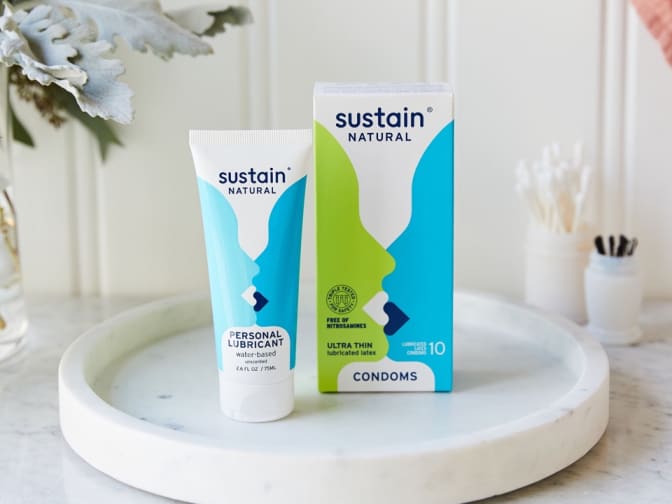
Condoms are protective barriers that fit over a penis or other phallic-shaped object. When used properly, condoms lower the chance of pregnancy and dramatically reduce the risk for both parties of contracting a sexually transmitted disease or infection.
Condoms are considered a class II medical device, meaning they follow specific guidelines outlined by the Food and Drug Administration.
Internal condoms, also called female condoms, are protective barriers that fit on the inside of a vagina or anus. They look kind of like a plastic tube with rings on either end, with one ring fitting on the inside of the body and one covering the outside entryway.
Like external condoms, internal condoms are considered class II medical devices that can protect against pregnancy and sexually transmitted diseases and infections. They are much larger than external condoms, and are made with similar latex and non-latex material options.
The CDC recommends not using internal condoms with external condoms — this can cause tearing which can lead to pregnancy and STI transmission. They also recommend not reusing internal condoms, they're one and done.
After working through the initial new-and-awkward phase, internal condoms can feel amazing for both partners. Unlike external condoms, which require a phallus or erection nearby, internal condoms can be inserted and stay inserted hours before sex even starts.
When things start to get heated, the internal and external rings help stimulate the inside and outside sensations for each partner. For added pleasure, internal condoms come pre-lubed, and play nice with most water and silicone-based lubes.
Find out more about natural and personal lubricants that work best with condoms.
Added pleasure, combined with added sexual protection, has led to many people to prefer internal condoms to their external counterparts.
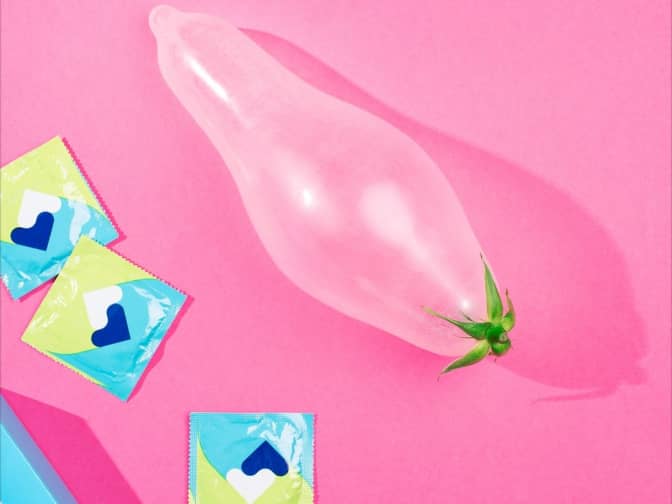
If you’re like many folks with a penis, you might be a bit self-conscious when it comes to all things size-related. It’s nothing to be embarrassed about, though, because choosing the right size actually means you’re setting yourself up for a lower risk of condom errors and a more sensational experience.
If you’ve ever measured your penis (you know — just to know), it’s time to get out that tape measure again, because you’ll need to know the exact dimensions before knowing which size to buy. When choosing a size, the right width is more important than the right length, since condoms are made to accommodate a range of lengths. Scroll down below to find tips for finding the right measurements.
Condoms generally come in three sizes: snug, standard, and large. Snug and large condoms are often labelled clearly, while standard condoms often don’t mention sizing at all.
Here’s a breakdown of the sizing for snug fit condoms:
Here’s a breakdown of the sizing for standard fit condoms:
Here’s a breakdown of the sizing for large fit condoms:
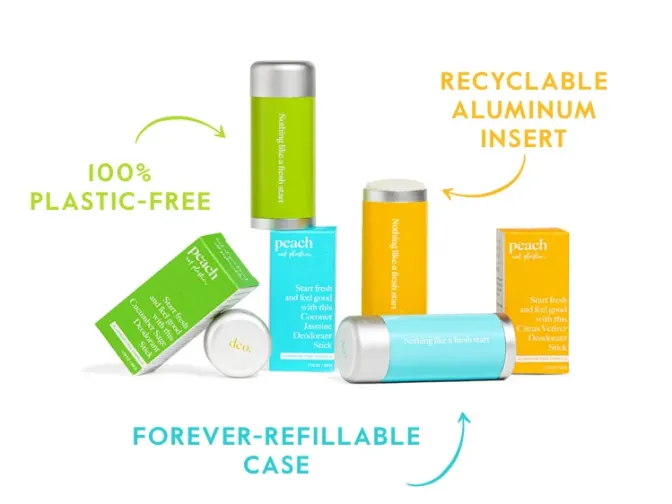
U.S. companies make 76 million pounds of plastic every day, but only 9% of plastic is recycled. At Grove, we think it's time to stop making plastic. How are your shopping habits contributing to the Earth's plastic pollution?
Peach Not Plastic is removing plastic from personal care with innovative hair, face, and body care. Try it and help us continue to remove plastic from our oceans!
The only way to get the right sized condom is to know your measurements. A good fit means a good time, and while measuring your penis may be kind of weird (if you haven’t already been doing it your whole life,) it’s quick and easy to do!
While knowing the size you need makes condom shopping a lot easier, there is still an overwhelming
Latex is the most common condom material and provides a strong, thin, effective barrier against mingling bodily fluids. However, latex does not transfer heat very well. Also, it goes without saying that anyone with a latex allergy should definitely pass on these condoms!
Polyurethane is a type of plastic, which makes it a great choice for anyone with a latex allergy. Polyurethane condoms are generally more expensive and looser-fitting than latex, but they offer better heat transfer and a thinner barrier.
A type of natural rubber, polyisoprene condoms are similar to latex in feel — but won’t exacerbate any potential allergies. Thicker than polyurethane but softer than latex, polyisoprene condoms hit a great middle ground between durability and optimum sensation.
Made from lamb intestines, lambskin condoms are thin, durable, great at heat transfer, and come in very large sizes. However, although lambskin condoms are made from natural materials, they are also expensive, and do not protect against STIs, making them a niche pick best for monogamous couples.
How do natural, organic, fair trade, and vegan condoms work?
While lambskin condoms are considered natural because they are made with natural ingredients, they are not vegan. Many non-lambskin condoms are plant-based, they may contain added synthetic ingredients to adjust the feel, texture, or look. If you prefer your condoms au naturel, look for brands that tout totally natural or organic ingredients and which are devoid of fillers, parabens, and non-natural lubricants.
However, Cleveland Clinic does warn that natural condoms, specifically lambskin condoms, do not protect against STIs as effectively as non-natural condoms.
The best option is to look for more ethical, fair trade companies and condoms, like Sustain. Co-founder Jeffrey Hollender explains that "Fair trade condoms contribute to an improvement in the working and living conditions of the people who produce the condoms natural latex and ensure there are no children working on the plantation. We’re applying the Fair Trade principles like fair wages, improving living standards and working conditions, providing health care and education for all workers and their families. Fair Trade essentially means paying the full value of the latex we source and improving the lives of those in our supply chain. We pay a 25% premium for all the latex we purchase to cover the costs associated with these programs and standards."
"As a condom brand, we’re also working to influence other condom brands like Trojan and Durex to sign on to Fair Trade principles. Sustain is currently the only condom brand sold in the U.S. that is Fair Trade certified. And if we can do it, and we’re a small player, why can’t they? That would be a game–changer for the condom industry, and rubber industry as a whole," says Hollender.
While marketing terms like “Fire & Ice” may sound silly, extra condom features can be a huge turn-on, given the right context.
Condoms with ridges, studs, ribs, or other added textures can be great if you want more friction during penatrative sex. When using textured condoms, be sure to use additional lube, as extra friction can quickly turn to extra irritation if things get too dry.
Fun condom fact: many condoms (and their lubes) taste terrible. If you want oral sex on a phallus without the risk of STDs, STIs, or a bad taste, a flavored condom is an easy fix! Many brands offer organic and vegan flavors that taste great.
The last thing you want is for your condom to get in the way of your good time. As long as you follow these basic guidelines, you’ll be sure to avoid breaks, spills, slips, and the dreaded inside-out moment.
Pinch the tip of the condom between two fingers. Then, roll the base of the condom over the phallus until the roll meets the base of the penis.
Condoms create a lot of friction during sex, especially if they’re dry. Too much friction can be unpleasant and can lead to the condom coming off or tearing during use. If your condom isn’t pre-lubed, add your own!
Once a condom has sperm in it, be careful! To avoid things like condom flips, slips, and leaks, wrap your thumb and index finger around the base of the condom to hold it in place as you pull the phallus out of any sexy spot.
Condoms are not reusable or recyclable, so after a job well done, they must be thrown out — but toss them in the trash can, because they’re also not flushable!
While condoms are one-use only and made of materials that take a long time to biodegrade, there are ways to ensure your condom is as eco-friendly as possible. Condoms made from sustainably sourced rubber and from companies practicing positive trade and labor practices can help soften the blow of their single-use status.
The main ingredient in latex and rubber condoms is all natural: both are derived from the rubber tree. But most condoms mix this natural ingredient with synthetic fillers. All-natural condoms may be more expensive, but they are pure in both condom and lube ingredients.
By accepting that condoms are sexy, of course! Condoms are only as annoying as you make them. Changing the way you view condoms goes a long way toward making them more fun. Condoms aren’t a break in the action — they are part of the action.
Ready to give natural condoms a try? Pick up some of Sustain's natural condoms. Lubricated inside and out, these condoms are nitrosamine free - which are chemicals of concern found in most condoms, and we don't think they have any business being in a body. They're also made with Fair Trade latex. Plus, every single condom is triple tested electronically for safety and is FDA cleared.

We’re talking about a big part of sexual wellness here: natural lubricants. Have a read on which lubes work best in different situations and how to use them correctly!
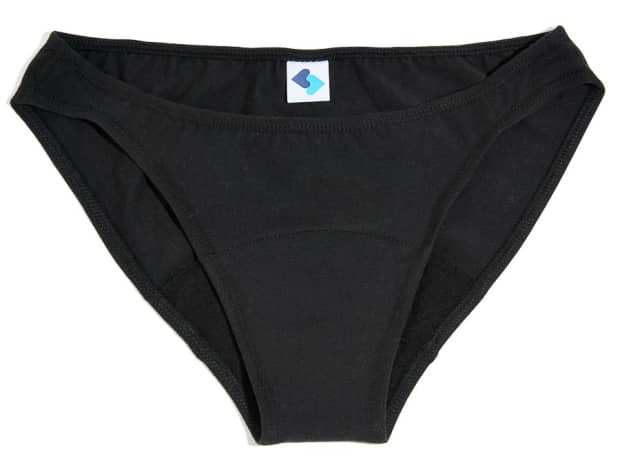
Follow our guide to comfortable and leak-proof protection that’s both ecologically sustainable and economically smart.
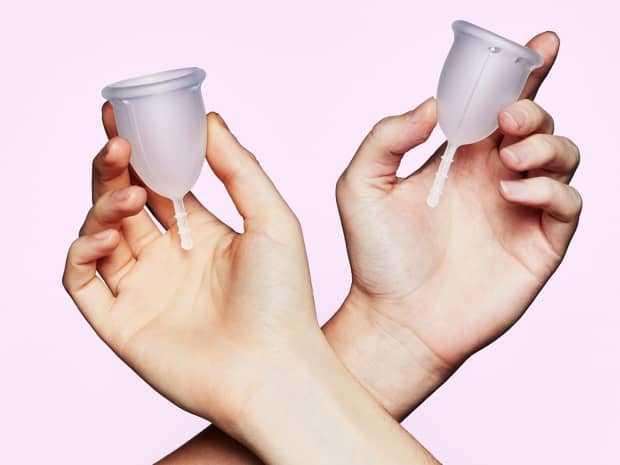
These environmentally friendly and cost-effective feminine care items might just be your next sustainable swap.
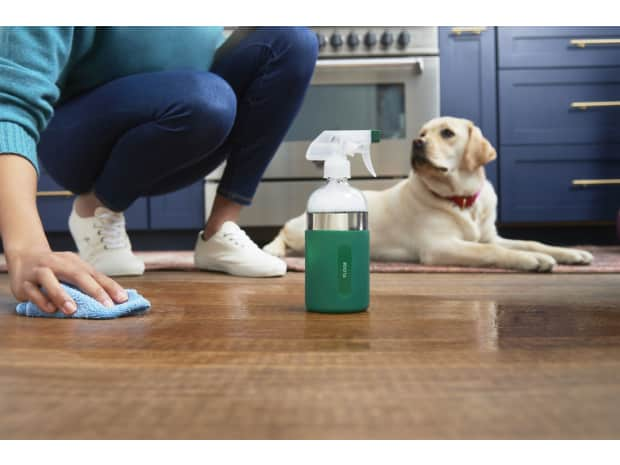
If fragrances aren't for you, we've pulled the top 26 fragrance-free skincare and household products determined by Grove members. Have a look!